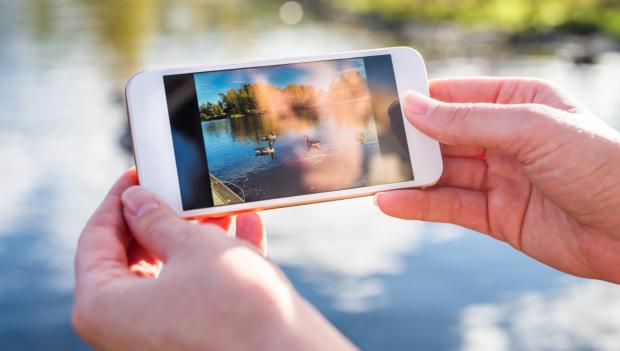Outdoor Photography Tips for Beginners

When your campsite is surrounded by stunning scenery, the one thing that makes a rosy sunset or close encounter with wildlife even more special is being able to capture it on film. Shooting video and photos of your outdoor adventures lets you relive the memories once you’re back home, bring travel stories to life for friends and family, and share your adventures on social media.
Whether you’re shooting panoramic landscapes to frame and hang in your living room or creating an informal travelogue of your favorite day hike to post on YouTube, it’s easy to work in a few tried-and-true techniques that will give your shots a professional polish. Consider adding a few of the latest photography gadgets to your backpack to make it easier to catch that spontaneous shot, take great photos in almost any conditions, and tap into your inner artist for your most creative shots ever.
How to capture the moment like a professional on your next outdoor adventure.
1. Shoot in the Golden Hour
Get up early and stay out until sundown for those magical shots that capture the world in deep, rich, professional-looking color. The golden hour just after sunrise and right before sunset are when the angle of sunlight casts a warm glow of yellow and red over your subjects. The sun’s low position on the horizon diffuses the light, creating a softening effect for more even exposure. The dramatic lighting angle deepens shadows, adding depth and texture to your photos as well.
2. Download Smartphone Apps
Nothing compares to the ease of smartphone technology for capturing images on the go. Edit your shots with free phone apps like Photoshop Express, Snapseed, VSCO and PicsArt for vivid color, mood and special effects. Advanced apps like Adobe Lightroom and Lens Distortion have monthly subscription fees, but can be worth the cost for their powerful filters and effects.
3. Invest to Improve
Many aspiring photographers start out with a fully automatic point-and-shoot camera. Expand your options with a digital single-lens reflex (DSLR) camera to start out taking photos in automatic mode just like you would with a point-and-shoot, then advance to partial and fully manual modes as your skills improve. The Canon Rebel comes with simple guided screen options to get you started.

Recommended: Enjoying Responsible Recreation in State Parks
4. Always Be Ready to Shoot
Variables like changing light conditions and fast-moving animals make nature photography unpredictable. By the time you pull your camera out of your pack, you’ve probably missed your shot. Be ready to capture the moment with a Think Tank Waist Belt. Belt systems secure your camera at the hip, allowing full range of motion for balance and shooting. Padding keeps your hips happy, with plenty of Velcro fasteners to add gear like extra lenses, and tissue to keep lenses and sensors dirt-free.
5. Focus is Key
There are many ways to retouch photos, but there’s no way to fix a blurry image. Keep your focus sharp with a Slik Tripod. Models less than a foot high can be propped on rocks and picnic tables, while taller tripods steady your shots almost anywhere. Look for a maneuverable camera mount and expandable, locking legs to quickly change height and perspective while out in nature.
6. Patrol Your Borders
To capture those stand-out images, photography pros look not just at the center of the photo frame but around the edges. Scan your image for distracting lines, dead space and areas where you’ve cut off your subject. Follow the rule of thirds by breaking your frame down into horizontal and vertical thirds and lining your subject up along grid intersection points for the strongest impact. Walk around your subject, then raise and lower the camera to find the most expressive angle.

7. Slow Down
The most inspired photos come when you take the time to scout locations and soak in the details of your surroundings. Don’t be bashful about talking to locals or other photographers to discover cool, under-the-radar locations. Then, allow yourself to wander with no specific destination in mind, letting your artistic eye lead you to the shots you find most interesting.
8. Video
The rules of photography apply to video, but your ability to tell a compelling story is the factor that will earn likes and shares on social media. Infuse your clips with personality, thinking about who your audience is and what they’re most interested in before you shoot. Pack your video with interesting content but keep it short, aiming for two minutes or less.
9. Back It Up
Don’t spend all that time taking amazing photos only to lose or delete them when you get back home. Use SanDisk SD cards and a portable SSD drive with enough capacity to create image back up files, and clear your camera’s storage so you can shoot more photos the next day. The Puluz Memory Card Case is lightweight yet holds up against dust and water in nature.
